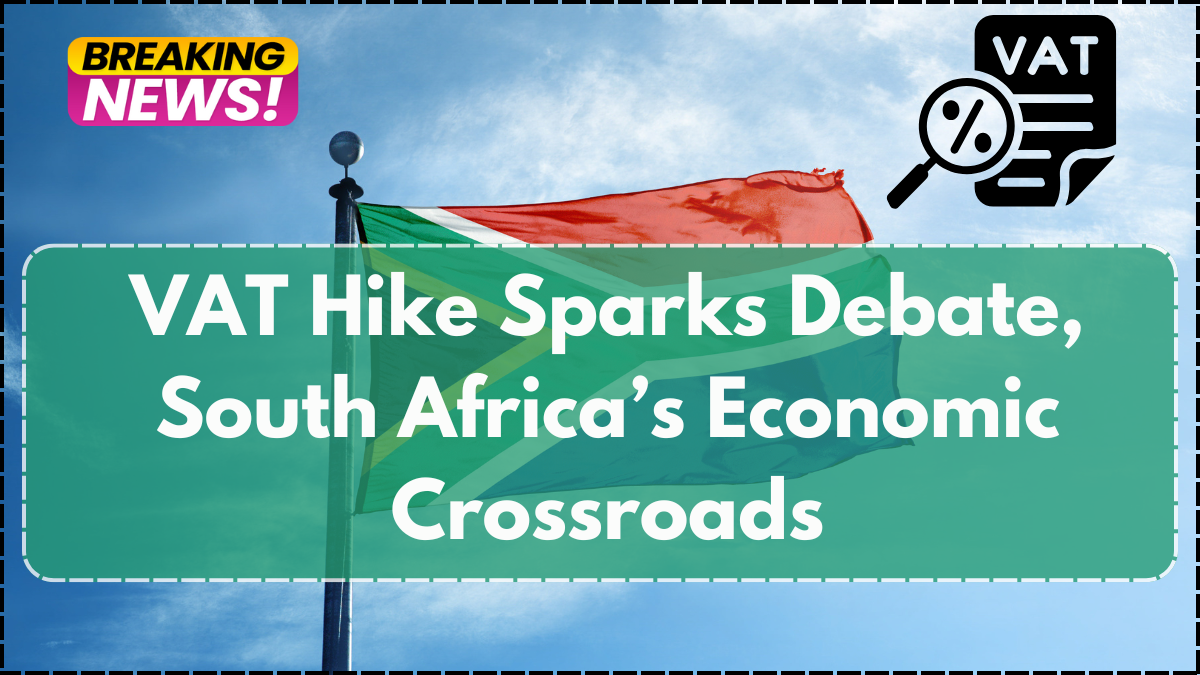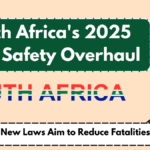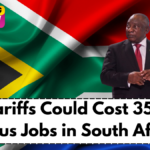Economic analysts and social commentators are expressing growing concern over South Africa’s proposed Value Added Tax (VAT) increase, expected to be implemented in phases starting 2025. With the first 0.5% rise scheduled for the 2025/2026 fiscal year and another 0.5% in 2026/2027, this move could elevate the VAT rate from the current 15% to 16%. While intended to address fiscal deficits and support essential public services, critics argue that this measure will disproportionately impact poor and middle-income households already strained by high living costs.

Mounting Financial Pressure on Households
The VAT hike proposal adds to an already burdensome tax landscape in South Africa. Households are grappling with multiple levies including personal income tax, municipal charges, fuel levies, and excise duties. The compounding effect of these taxes is pushing many families to the financial brink. Adding VAT—a tax embedded in most consumer goods—threatens to further erode disposable income and exacerbate poverty.
Understanding VAT in the South African Tax Structure
Value Added Tax plays a central role in South Africa’s revenue generation, contributing significantly to the national budget. As a broad-based consumption tax, VAT is applied to a vast range of goods and services, sparing only a limited list of zero-rated essential items such as basic foodstuffs. Its universality means that almost every purchase, from electricity to school supplies, includes a VAT component. This makes any adjustment to its rate immediately felt across all income groups.
Treasury’s Justification for the VAT Adjustment
In response to ongoing fiscal challenges, including growing national debt and underfunded public services, the National Treasury led by Finance Minister Enoch Godongwana is defending the VAT increase as a necessary corrective measure. Government plans to utilize the additional revenue to sustain key programs such as infrastructure development, social welfare disbursements, and public sector salaries. Treasury officials assert that without expanding revenue sources, essential services could suffer severe cuts.
Economic Experts Raise Red Flags
However, not all economic voices are in agreement with the Treasury’s approach. Dr. Johann Frederich Kirsten, a senior economist from the University of Johannesburg, warns that even a phased VAT increase fails to cushion its impact on vulnerable communities. He notes that the timing is particularly concerning, given the economic downturn, persistent unemployment, and rising household debt. Kirsten emphasizes that the cumulative financial burden could drive more families below the poverty line.
Impact on South Africa’s Middle Class
Often referred to as the “missing middle,” middle-income earners in South Africa find themselves in a precarious position. They earn too much to qualify for government assistance but too little to absorb the cost of living increases triggered by policy changes such as a VAT hike. With many everyday essentials not covered under zero-rating, this demographic is likely to experience the brunt of the VAT hike. Increased food, transportation, and education costs could severely tighten their already stretched budgets.
Tax Burden Comparison by Income Group
| Income Group | Type of Tax Impacted Most | Vulnerability to VAT Increase |
|---|---|---|
| Low-income | VAT, Excise Duties | Very High |
| Middle-income | VAT, Fuel Levy, Income Tax | High |
| High-income | Income Tax, Capital Gains Tax | Moderate |
Real-World Stories Highlight the Human Cost
Stories from communities like Zandspruit add a deeply personal dimension to this debate. Dineo Mosinki, a 42-year-old unemployed mother of five, depends on government grants to feed and educate her children. She fears that a 1% increase in VAT over two years will force her to choose between food, electricity, and school expenses. Like many in similar circumstances, she advocates for job creation and better economic opportunities instead of consumption tax hikes.
Alternatives to a VAT Increase: Expert Proposals
Prominent voices such as Professor Jannie Rossouw from Wits Business School argue that the government should explore cost-cutting measures before turning to tax increases. Rossouw recommends a more streamlined Cabinet, fewer deputy ministers, and the elimination of unnecessary state expenditures. These adjustments, he believes, could free up significant public funds without further burdening taxpayers.
Long-Term Growth Over Short-Term Revenue
Rossouw and other economists emphasize that economic expansion, not taxation, should be the foundation of fiscal recovery. A growing economy naturally broadens the tax base and generates sustainable revenue streams. Investments in infrastructure, education, and entrepreneurship can stimulate growth, create jobs, and ultimately reduce dependence on tax hikes.
Conclusion
While the South African government views the proposed VAT hike as a strategic necessity to fund public services and manage debt, the broader implications suggest a complex trade-off. The poor and middle-income citizens are at the highest risk of financial distress, and economic experts are urging the state to consider alternative paths to recovery. As South Africa navigates the second quarter of 2025, finding a balanced, inclusive approach to fiscal stability remains crucial.
FAQs
What is VAT and how does it affect consumers?
VAT (Value Added Tax) is a consumption-based tax applied to goods and services. Consumers pay this tax at the point of purchase, meaning any increase in VAT directly raises the price of most products and services.
When will the VAT increase take effect?
The VAT hike is proposed to occur in two phases: the first 0.5% in the 2025/2026 fiscal year and another 0.5% in 2026/2027, raising the rate to 16%.
Are any items exempt from VAT?
Yes, certain basic food items like maize meal, rice, and bread are zero-rated and not subject to VAT. However, many essential goods remain taxable.
Who will be most affected by the VAT increase?
Low- and middle-income households are expected to be most impacted, as they spend a larger portion of their income on VAT-inclusive goods and services.
What alternatives exist to increasing VAT?
Experts suggest cutting government expenditure, reducing Cabinet size, and focusing on policies that stimulate economic growth as alternative solutions to raising VAT.
For More Information Click Here
Pari is a passionate writer known for captivating stories that blend imagination and reality. Inspired by travel, history, and everyday moments, Pari crafts narratives that resonate deeply with readers.




